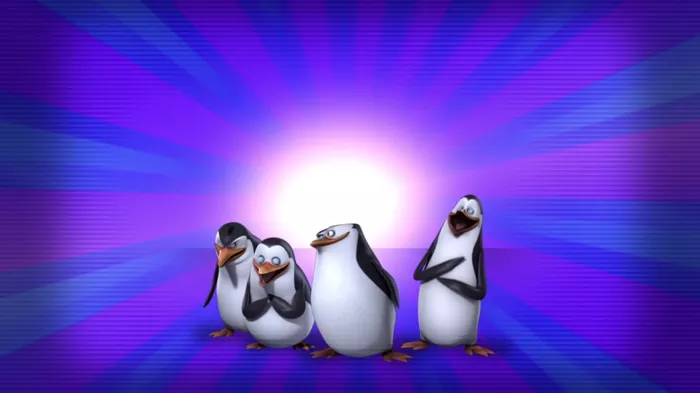The Penguins of Madagascar” has established itself as a pivotal spinoff from DreamWorks Animation’s successful “Madagascar” franchise. Known for its unique blend of humor, action, and clever storytelling, the show continues to captivate audiences across various demographics. In its third season, which aired from 2012 to 2013, the series not only maintained its charm and wit but also explored deeper character development and introduced new dynamics that enriched its narrative complexity. This article provides an in-depth analysis of Season 3, examining its themes, character arcs, and its significance within the broader context of animated television.
Overview of Season 3: Plot and New Developments
Season 3 of “The Penguins of Madagascar” consists of 33 episodes, each continuing the adventures of the penguin squad—Skipper, Kowalski, Rico, and Private—in their self-appointed roles as protectors of the Central Park Zoo. This season stands out for its heightened focus on global adventures, with the penguins often leaving the zoo to tackle threats in various parts of the world. This global trotting adds a layer of excitement and allows for a broader range of scenarios and character interactions.
Character Deep Dive: More Than Just Comic Relief
One of the strengths of Season 3 lies in its deeper exploration of main and supporting characters. The penguins, typically seen as a cohesive unit, are given individual spotlights that reveal more about their personalities and backstories.
Skipper: The Leader’s Burden
Skipper, the fearless leader of the group, faces numerous challenges that test his leadership throughout the season. Episodes like “Antics on Ice” and “Action Reaction” showcase Skipper making tough decisions under pressure, providing viewers with insight into the complexities of his often comically stoic character. This season delves into the vulnerabilities hidden beneath his tough exterior, making him a more relatable and three-dimensional character.
Kowalski: The Brain’s Emotional Intelligence
Kowalski, known for his inventiveness and scientific approach, encounters situations where his intellect alone cannot solve problems, such as in “Mental Hen” and “The Penguin Who Loved Me.” These episodes explore his emotional side, highlighting growth in how he balances logic with feelings—a significant development from the earlier seasons.
Rico: The Wild Card’s Heart
Rico, often used as comic relief due to his unpredictable behavior and love for explosives, gets more screen time this season. “Best Laid Plaintains” and “Loathe at First Sight” focus on Rico’s softer side and his relationships with other zoo animals, providing depth to what might otherwise be a one-dimensional character.
Private: The Rookie Comes of Age
Private’s journey this season is particularly poignant. Episodes like “Private and the Winky Factory” and “A Visit from Uncle Nigel” portray his growth from the naive, younger penguin into a more competent and confident individual. His development is crucial to the group dynamic, showcasing his transition from the ‘kid’ of the group to a more integral team member.
New Characters and Villains: Expanding the Universe
Season 3 introduces several new characters, including villains who are not just adversaries but also catalysts for the protagonists’ personal growth. Notable additions include Doris the Dolphin in “The Penguin Who Loved Me,” who has a complicated relationship with Kowalski, and the return of Dr. Blowhole, whose schemes continue to pose significant threats but also push the penguins to new levels of teamwork and innovation.
Themes and Messages: Underlying Moral Fibers
The themes of Season 3 often revolve around friendship, trust, and the importance of teamwork. However, this season also touches on environmental issues, the impacts of technology on society, and the ethics of intelligence operations, albeit in a light-hearted manner. These themes are woven seamlessly into the narrative, offering both entertainment and subtle education on important contemporary issues.
Animation and Technical Aspects: Visuals at Play
The animation quality in Season 3 remains consistent with the high standards set by previous seasons, with improvements in character modeling and background detailing. The use of vibrant colors and dynamic camera angles enhances the visual storytelling, making the action sequences more engaging and the humorous moments more impactful.
Cultural Impact and Reception: A Beloved Series
“The Penguins of Madagascar” Season 3 received positive reviews for its humor, character development, and creative plots. It continued to perform well among younger audiences while maintaining a significant adult following, thanks to its clever writing and universal appeal. This season played a crucial role in solidifying the show’s legacy as a notable work in the realm of animated television.
Conclusion: The Legacy of Season 3
“The Penguins of Madagascar” Season 3 is a testament to the series’ ability to evolve and adapt. By deepening character arcs, introducing compelling new characters, and exploring broader themes, the season not only entertains but also enriches the viewer’s experience. As the penguins navigate through their missions with a blend of humor and heart, they leave a lasting impact on their audience, proving that even a show about animated penguins can offer depth and reflection on real-world issues. Through its smart storytelling and memorable characters, Season 3 of “The Penguins of Madagascar” remains a pivotal chapter in the franchise, demonstrating that true adventure comes in all sizes, even as small as a penguin.

